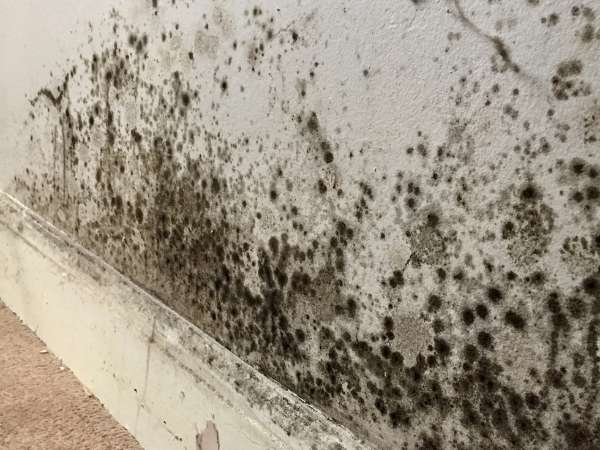Penicillium
Identification: Penicillium mould often appears as green, blue, or white fuzzy spots on walls, ceilings, and damp fabrics.
Prevention: Maintain low humidity levels, ensure proper ventilation, and promptly address water leaks or dampness.
Aspergillus
Identification: Aspergillus mould can be in various colours, including green, yellow, or brown. It’s commonly found on walls, window frames, and building materials.
Prevention: Keep indoor humidity levels in check, ensure good ventilation, and regularly clean and dust your home.

Cladosporium
Identification: Cladosporium mould often presents as dark green or black patches on damp surfaces, including walls and floors.
Prevention: Address leaks promptly, use exhaust fans in bathrooms, and consider dehumidifiers in particularly humid areas.
Stachybotrys (Black Mold)
Identification: Black mould, or Stachybotrys, is known for its slimy texture and black or dark green appearance. It’s often found in areas with long-term water damage.
Prevention: Fix water issues immediately, improve ventilation, and consider professional mould removal if extensive.
Alternaria
Identification: Alternaria mould is typically brown or black with a fuzzy texture. It’s often found in damp areas like kitchens and bathrooms.
Prevention: Keep areas dry, ensure good ventilation, and promptly clean any visible mould.
Chaetomium
Identification: Chaetomium mould usually starts as a white, cottony substance that darkens over time. It’s commonly found in areas with chronic water damage.
Prevention: Repair water damage promptly, improve insulation, and maintain a dry environment.
Aureobasidium
Identification: Aureobasidium mould is typically pink or brown and is often found on wooden surfaces, painted walls, and window frames.
Prevention: Ensure proper ventilation, seal cracks, and repaint affected surfaces with mould-resistant paint.
Conclusion:
Understanding the common types of mould found in UK homes is crucial for effective prevention and maintenance. Regularly inspecting your home for signs of mould, addressing water issues promptly, maintaining proper ventilation, and keeping humidity levels in check are key steps to preventing mould growth. By taking these precautions, you can create a healthier and mould-free living environment in the UK.




